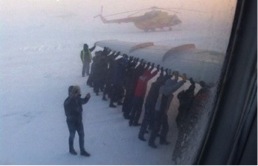UK/FR Joint Development New Phase of FCAS
 The British and French governments have signed an agreement to begin a new phase of the bilateral Future Combat Air System (FCAS) programme. A 12-month study phase will now begin, which will ultimately lead to a full-scale demonstrator development programme starting at the end of 2017.
The British and French governments have signed an agreement to begin a new phase of the bilateral Future Combat Air System (FCAS) programme. A 12-month study phase will now begin, which will ultimately lead to a full-scale demonstrator development programme starting at the end of 2017.
According to flightglobal.com, this $1.87 billion demonstrator stage of the FCAS unmanned system effort was agreed by French president Francois Hollande and then-UK Prime Minister David Cameron in March 2016, and the latest approval follows completion of a two-year feasibility study that began in November 2014. That study involved industry representatives from both nations working to assess the technologies required to operate an unmanned combat air vehicle, and included major companies like BAE systems, Rolls-Royce, Safran, Leonardo and Thales. Under the new agreement, these companies will carry out preparatory work leading to the assembly of two full-scale demonstrator aircraft.
FCAS began as a result of bilateral agreements made under the Lancaster House Treaty, and the two nations have also agreed to work on the logistics of operating future combat vehicles, particularly the integration of manned and unmanned systems.
11 dic 2014 – Preparing for the Future of Combat Aerospace (FCAS) by Thales
Harriett Baldwin, the UK’s defence procurement minister, and Laurent Collet-Billon, the French defence minister, signed the agreement in Paris on 16 December. When the demonstrator phase begins, the two examples built will be used for test and evaluation, with the aim of producing an operational system by 2030.
Nigel Whitehead, group managing director of BAE Systems, said: “We welcome the announcements by the UK and French governments which will enable the next phase of the joint unmanned combat air system programme to begin. This important work not only contributes to the sovereign capability and national security of both nations but helps to sustain the unique engineering skills base required to develop the next generation of aircraft.”
Source http://i-hls.com/


